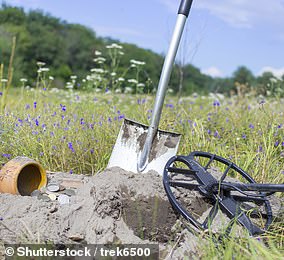Talk about striking gold! Metal detector unearths largest gold nugget ever found in England – set to fetch at least £30,000 at auction
A treasure hunter has found the largest gold nugget ever found in England worth £30,000, despite a faulty metal detector.
Richard Brock, 67, traveled three and a half hours from his home in Somerset to take part in an organized expedition on farmland in the Shropshire Hills.
Upon arrival he found he was having problems with his detection kit and had to resort to using an unreliable old machine that didn’t even work properly.
But a little later, Richard, who has been metal detecting for 35 years, discovered the biggest find of his life: after digging up a 64.8 gram gold nugget.
The metal lump, dubbed ‘Hiro’s Nugget’, is now set to fetch at least £30,000 at auction as it is believed to be the largest find of its kind on English soil.
A treasure hunter has discovered the largest gold nugget ever found in England worth £30,000 – despite a faulty metal detector
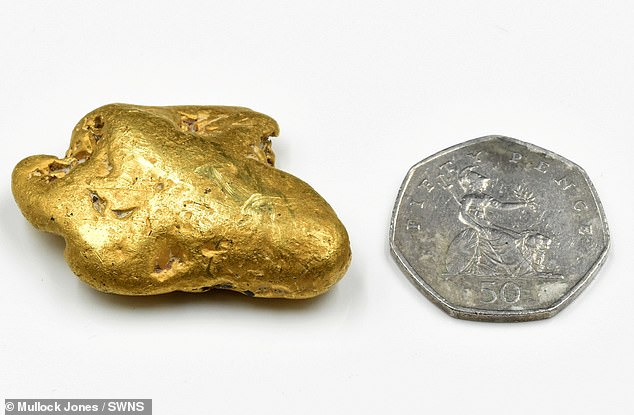
The metal lump, dubbed ‘Hiro’s Nugget’, is now set to fetch at least £30,000 at auction as it is believed to be the largest find of its kind on English soil.
Father-of-four Richard said: ‘I have been looking since 1989 and decided to join the trip as a similar trip to Australia was canceled during the pandemic.
‘So I drove three and a half hours to Shropshire and ended up arriving about an hour late because I thought I’d missed the action.
“Everyone there had all this modern equipment and I ended up with three old machines, and one of them was packed up there every now and then.
‘At first all I found were some rusty tent pegs with this reverse detector with a faded screen.
“But after just twenty minutes of scanning the ground, I found this nugget buried about six to six inches deep in the ground.
‘I was perhaps a little too honest and started showing people, and then suddenly I had swarms of other detectorists scanning the same area.
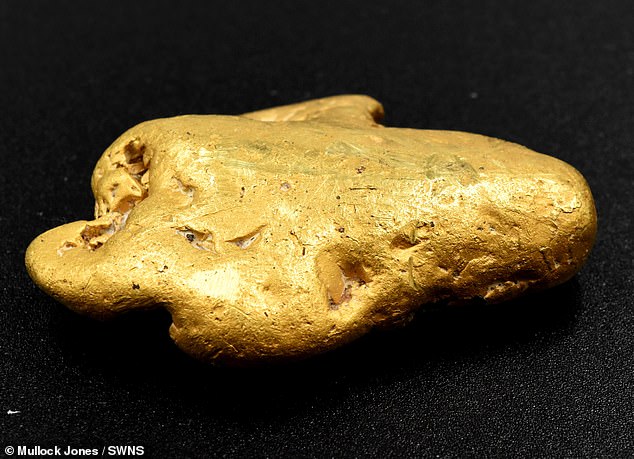
After just twenty minutes of scanning the ground, I found this nugget buried about six to six inches deep in the ground,” Richard said.
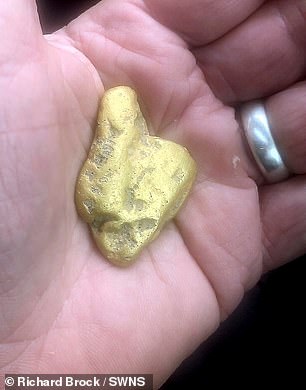

Richard, who has been metal detecting for 35 years, made the biggest find of his life – after unearthing a 64.8 gram gold nugget
‘The machine I was using was pretty much broken – it was only half working. It just goes to show that it doesn’t really matter what equipment you use.
‘If you walk over the find and are alert enough to what is hiding underground, that makes all the difference.
‘I couldn’t believe it – I showed up late, was only there for a few minutes and this treasure hunt would take all day.
“I couldn’t look for anything else because the landowner, the dig organizer and all the other detectorists around me were trying to look at this gold nugget.”
What exactly a gold nugget was doing in the Shropshire Hills, near Much Wenlock, remains somewhat of a mystery.
But parts like the Wenlock Edge are an ancient landscape that was once beneath a prehistoric ocean, and hunters often find remnants of coral in the area.
There was also a large amount of rock that originally came from Wales, a country known for being rich in gold.
Richard’s discovery was made at a site believed to have been an old track or road with railway lines running through it and containing stone that may have been spread from Wales.
The only previous larger specimens in Britain have been found in Wales and Scotland.
The Douglas Nugget found in Perthshire weighed 85.7 grams, another from the coast of Anglesey weighed 97.12 grams and the Reunion Nugget found in Scotland in 2019 weighed 121.3 grams.
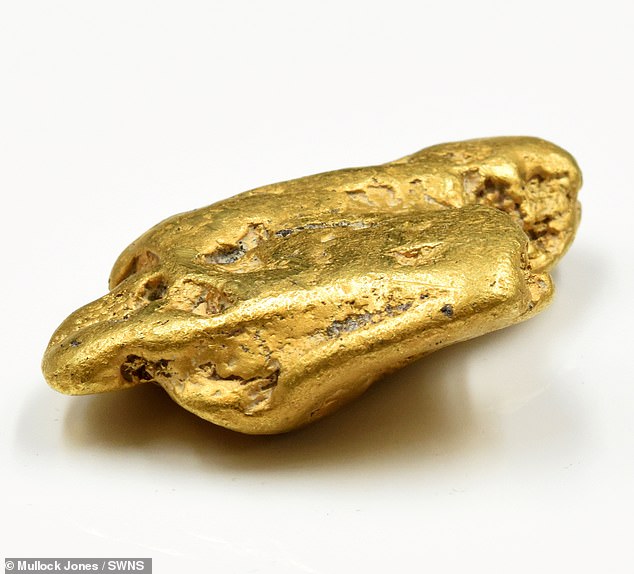
What exactly a gold nugget was doing in the Shropshire Hills, near Much Wenlock, remains somewhat of a mystery
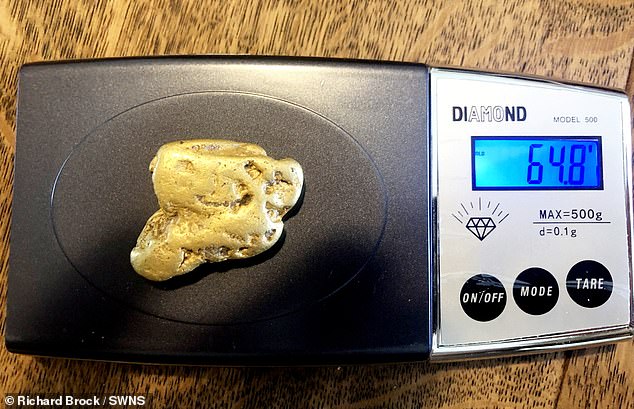
Richard’s discovery was made at a site believed to have been an old track or road through which railway lines passed, containing stone that may have been spread from Wales.
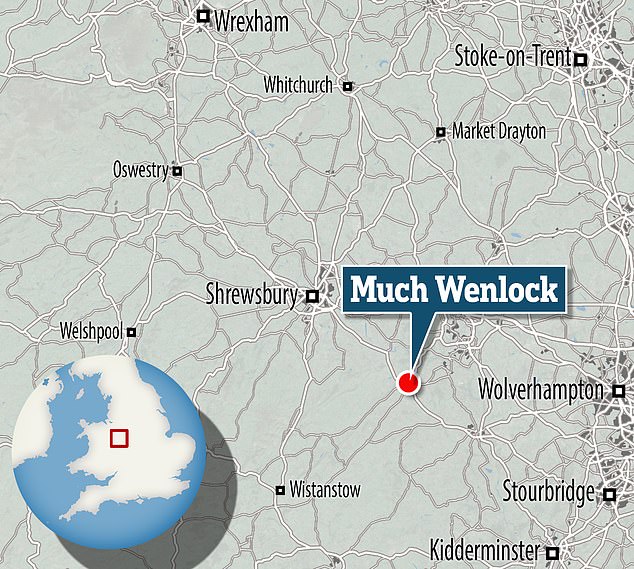
Parts such as the Wenlock Edge are an ancient landscape that was once beneath a prehistoric ocean and hunters often find remnants of coral in the area
Retired cameraman Richard added: ‘After some research we could only find bigger than this in Wales and Scotland
‘The last one claimed to be bigger in England weighed 54 grams, but mine is 64.8 grams, so we’re pretty sure this is the largest found on English soil.
‘I did contact the find contact and they were happy to let me do what I wanted with it, so I thought I’d try selling it at auction.
“I’m going to share whatever it sells for with the landowner. I found it last May, but only recently discovered that it might be the largest; it’s actually unbelievable.’
Auctioneer Mullock Jones is offering the nugget for sale in a timed auction that started last weekend and runs until April 1 with an estimated value of £30,000.
Ben Jones, from the auctioneers, said: ‘We expect significant interest in this item. It is a rare opportunity to acquire a beautiful gold nugget.
“We’ll be offering it as one item to online bidders from Friday, March 15 through April 1 at 6 p.m..”
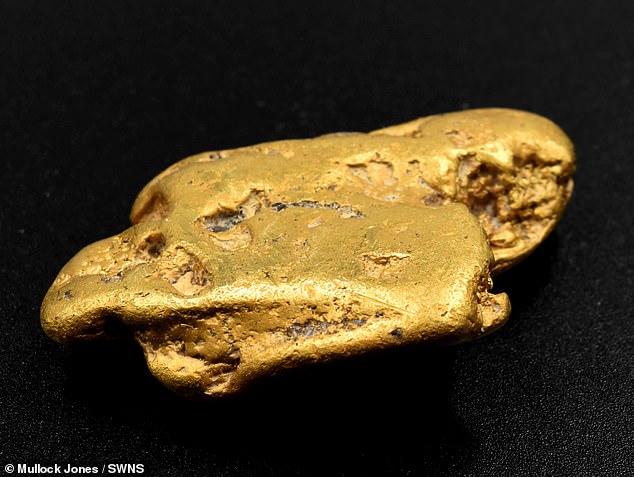
The only previous larger specimens in Britain have been found in Wales and Scotland
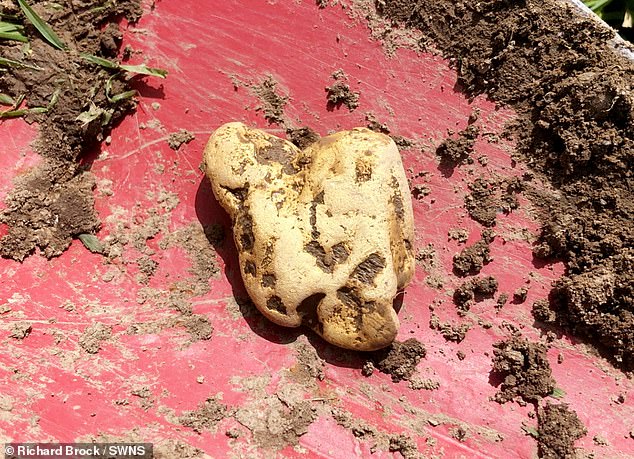
Ben Jones, from the auctioneers, said: ‘We expect significant interest in this item. It is a rare opportunity to acquire a beautiful gold nugget’

